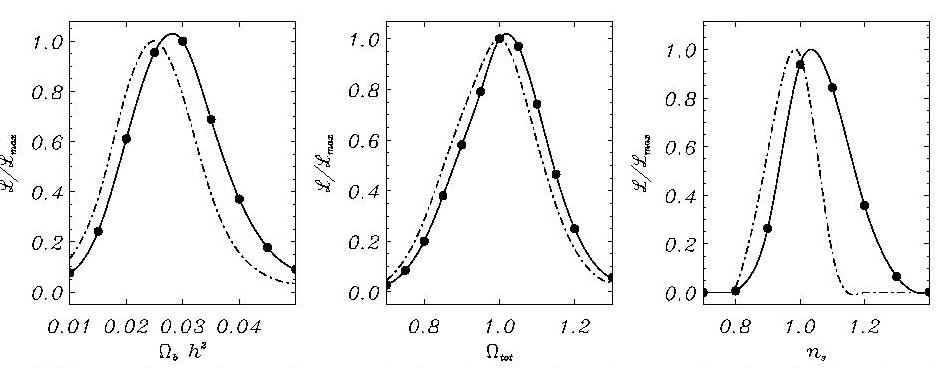My Research Interests. Parameter Estimation
Using the measurements on the angular power spectrum obtained with the VSA experiment, one can infer constraints on the values of several cosmological parameters. This is usually done by adopting a Bayesian approach based on the evaluation of the likelihood function, as explained in Rubiño-Martín et al. (2002). In that paper, we used a pre-computed grid of 420,000 Λ-CDM models to explore a 7-d parameter space, and to set constraints on parameters like the physical baryon density, the curvature of the Universe, or the physical density of dark matter. Our results confirmed that the curvature of space is close to zero -- we live in a spatially 'flat' universe, and that the material in the Universe is dominated by dark matter. Finally, we also found evidence for 'vacuum dark energy' which is currently not well understood, but is causing the universe to accelerate
For higher dimensionality of the parameter space, we employ Monte-Carlo methods to explore the likelihood function. This was done in Rebolo et al. (2004) using the VSA data from its extended configuration in combination with the WMAP power spectrum. In that paper, we obtained constraints on cosmological parameters in a 12-dimensional parameter space, which was explored via a Monte-Carlo Markov-Chain (MCMC) method. For further information about these methods, and how they are applied in CMB analyses, see the COSMOMC page.
